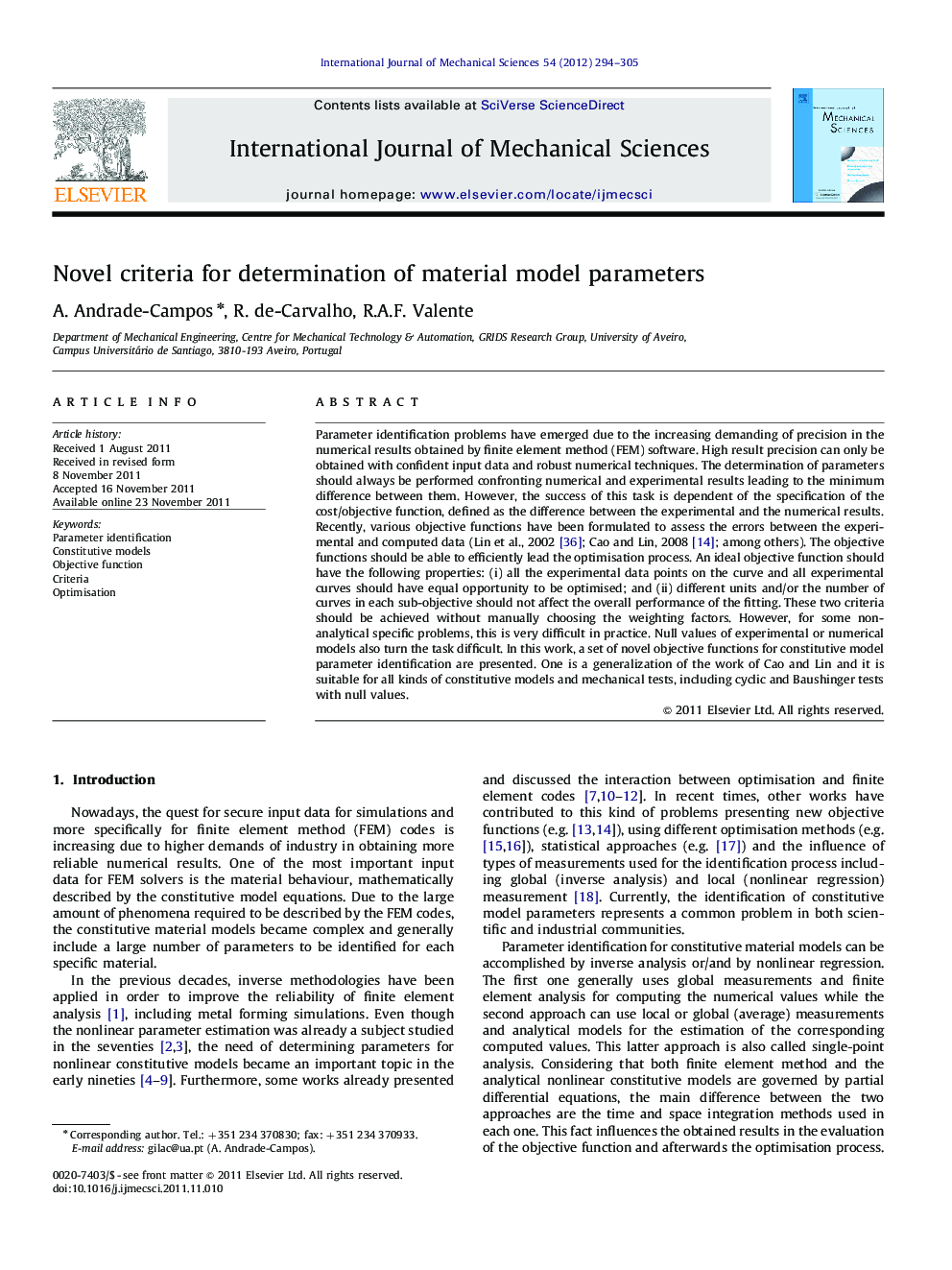| Article ID | Journal | Published Year | Pages | File Type |
|---|---|---|---|---|
| 782499 | International Journal of Mechanical Sciences | 2012 | 12 Pages |
Parameter identification problems have emerged due to the increasing demanding of precision in the numerical results obtained by finite element method (FEM) software. High result precision can only be obtained with confident input data and robust numerical techniques. The determination of parameters should always be performed confronting numerical and experimental results leading to the minimum difference between them. However, the success of this task is dependent of the specification of the cost/objective function, defined as the difference between the experimental and the numerical results. Recently, various objective functions have been formulated to assess the errors between the experimental and computed data (Lin et al., 2002 [36]; Cao and Lin, 2008 [14]; among others). The objective functions should be able to efficiently lead the optimisation process. An ideal objective function should have the following properties: (i) all the experimental data points on the curve and all experimental curves should have equal opportunity to be optimised; and (ii) different units and/or the number of curves in each sub-objective should not affect the overall performance of the fitting. These two criteria should be achieved without manually choosing the weighting factors. However, for some non-analytical specific problems, this is very difficult in practice. Null values of experimental or numerical models also turn the task difficult. In this work, a set of novel objective functions for constitutive model parameter identification are presented. One is a generalization of the work of Cao and Lin and it is suitable for all kinds of constitutive models and mechanical tests, including cyclic and Baushinger tests with null values.
